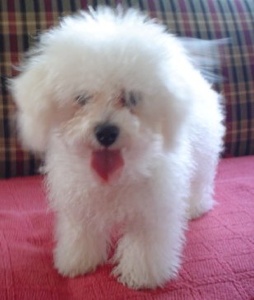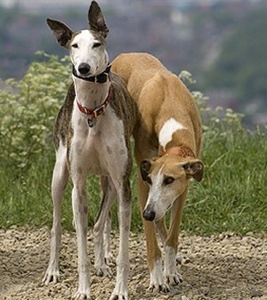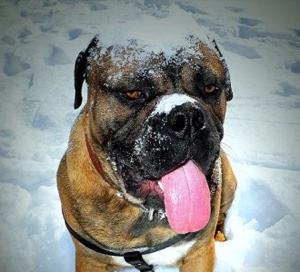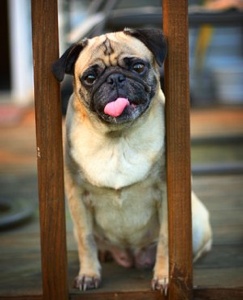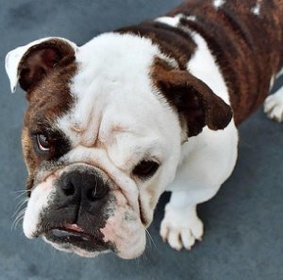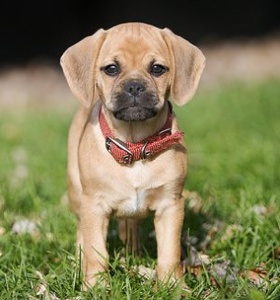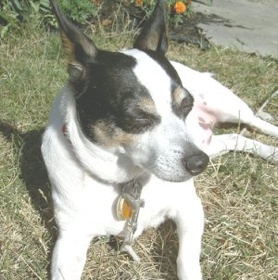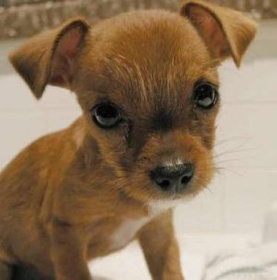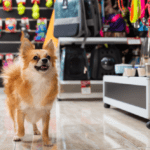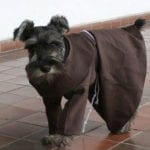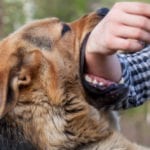 Technology
Technology  Technology
Technology  Humans
Humans 10 Everyday Human Behaviors That Are Actually Survival Instincts
 Animals
Animals 10 Animals That Humiliated and Harmed Historical Leaders
 History
History 10 Most Influential Protests in Modern History
 Creepy
Creepy 10 More Representations of Death from Myth, Legend, and Folktale
 Technology
Technology 10 Scientific Breakthroughs of 2025 That’ll Change Everything
 Our World
Our World 10 Ways Icelandic Culture Makes Other Countries Look Boring
 Misconceptions
Misconceptions 10 Common Misconceptions About the Victorian Era
 Mysteries
Mysteries 10 Strange Unexplained Mysteries of 2025
 Miscellaneous
Miscellaneous 10 of History’s Most Bell-Ringing Finishing Moves
 Technology
Technology Top 10 Everyday Tech Buzzwords That Hide a Darker Past
 Humans
Humans 10 Everyday Human Behaviors That Are Actually Survival Instincts
 Animals
Animals 10 Animals That Humiliated and Harmed Historical Leaders
Who's Behind Listverse?

Jamie Frater
Head Editor
Jamie founded Listverse due to an insatiable desire to share fascinating, obscure, and bizarre facts. He has been a guest speaker on numerous national radio and television stations and is a five time published author.
More About Us History
History 10 Most Influential Protests in Modern History
 Creepy
Creepy 10 More Representations of Death from Myth, Legend, and Folktale
 Technology
Technology 10 Scientific Breakthroughs of 2025 That’ll Change Everything
 Our World
Our World 10 Ways Icelandic Culture Makes Other Countries Look Boring
 Misconceptions
Misconceptions 10 Common Misconceptions About the Victorian Era
 Mysteries
Mysteries 10 Strange Unexplained Mysteries of 2025
 Miscellaneous
Miscellaneous 10 of History’s Most Bell-Ringing Finishing Moves
Top 10 Dogs for Lazy Owners
Are you looking for dogs for lazy owners? Then you’ve come to the right place! Too many people decide that they wanted a cutesy, wootsie little dog to love and then spend a ton of time and money picking out a perfect pooch. Then these people proceed to ignore the dog after a couple of months when the novelty wears off and they realize that a dog is work.
I want to shake those people and scream: “A dog is not a lawn ornament or a household decoration!” In addition to the basics—water, food and shelter—a dog needs attention, affection, mental stimulation, grooming and physical activity.
So for those who insist on dog companionship but have no intention of taking 30-minute walks daily, spending weeks, or money, for training, or taking the dog to the groomers bi-weekly, I offer this list of low-maintenance dogs. (I know, some people really aren’t physically able to walk a dog everyday for whatever reason but would still like companionship. Ignore the “lazy” in the title and read on.)
Note: I am not in any way advocating that you neglect or ignore any dog. My point here is, please don’t adopt a high-energy Border Collie if you hate walking to the car or a high maintenance Shih Tzu if you barely brush your own hair. Bring home a dog that needs a tenth of the work for the same amount of love.
SEE ALSO: 10 Lies About Dogs We All Believe
10 Bolognese
This breed was thought to have descended from dogs like the Bichon Frisé in southern Italy. The Bolognese became popular as a companion dog among royal courts and nobility of Spain, and other parts of Europe, up to the early 1800’s. This is a sturdy breed of Toy/Companion dogs without any particular genetic health problems. A Bolognese needs for:
Space – Minimal. A good apartment dog. This toy breed has a sturdy body and weighs 8 – 14 pounds, the size of a newborn.
Exercise – Low. A playful dog, but not highly active. Occasional walks are good.
Training – Low. This dog is smart and trainable. She may be reserved with strangers, but she gets along with kids and other animals.
Grooming – Moderate. This is a long hair breed with white hair. It mats up easily, but it doesn’t shed much and is actually considered hypoallergenic.
Brush up on your dog knowledge with The Dog Breed Bible: Descriptions and Photos of Every Breed Recognized by the AKC at Amazon.com!
9 Japanese Chin
The Japanese Chin, also known as the Japanese Spaniel, is actually believed to have originated in China and brought to Japan as a gift from a Chinese emperor. It was a popular dog of Japanese royalty and was introduced in Europe in the 1800s. The Japanese Chin needs for:
Space – Low. This is a small dog not quite reaching a foot in height and weighing 8 to 11 pounds.
Training – Low. This is a smart, quiet, mild-mannered dog. The Chin gets along well with almost everyone, including strangers, other animals and children. They are also alert and sensitive to their surroundings.
Exercise – Low. This small dog is made for the lap. Plus, with its shorter muzzle, too much exercise could cause breathing and heat problems. Occasional short walks would do.
Grooming – Moderate. The Chin’s coat needs regular brushing/combing to maintain its appearance and avoid matting. And they do shed lightly year-round but are very clean and do not smell.
Cons – Difficult to house train during the first 4 months of life. Other health concerns include luxating patellas, heart problems, back problems, cataracts.
8 Greyhound
A racing dog on a list for 10 Best Dogs for Lazy Owners? A-ha, you learn something new all the time. Yes, they do sprint fast, but they are not high-energy dogs. In fact, Greyhounds have been referred as “Forty-five mile per hour couch potatoes.” Greyhounds have been around for some time, and can be traced to ancient Egypt and Greece and have often been used for hunting and herding throughout history. The Greyhound needs for:
Space – Low. Seriously. Yes, this is a larger dog (60 to 70 pounds as an adult and 2 1/2 feet high), but they can thrive in small spaces. Most Greyhounds are quiet, gentle animals, and actually make better “apartment dogs” than breeds that are smaller but more active.
Training – Low-ish. These dogs are rather obedient and get along well with strangers, school-aged children, and other dogs. You maybe should train or supervise them around smaller pet animals or very young children.
Exercise – Low to moderate. Yes, greyhounds are sprinters and they love running, but they do not require extensive exercise. A 20 to 30 minute walk many days will keep an adult Greyhound healthy.
Grooming – Low. She has a short, smooth coat and no undercoat. These are good dogs to have if you have allergies.
Cons – Some skin sensitivities and sensitive to extreme temperatures
7 Bullmastiff
Yes, a Bullmastiff, as in that super large dog, is pretty low maintenance. This powerful guard dog was developed in the mid-1800s as a cross between the English Mastiff and the Old English Bulldog. They were bred, not to attack intruders, but to stand in front of them or knock them down and hold them. For their size, they tend to be pretty low-energy dog. A Bullmastiff needs for:
Space – Low-ish. Because of its size (100 to 130 lbs, 21 to 27” in height), you do need enough space in the house just so the dog can move and lounge around. However, these are calm, low-key dogs and they actually do fine in apartments. And they do best when they live inside with the owner.
Training – Low. Some training is recommended just for walking the large dog so he doesn’t pull. This dog is very loyal to its family, even-tempered, calm and very tolerant of children. In fact, these dogs crave human attention and are quite affectionate.
Grooming – Low. It has a short, smooth coat that sheds little.
Exercise – Low to moderate. The Bullmastiff is a calm, low-energy dog—it’s even known to be a lazy dog, clearly OK with lying on the sofa. However, because he is such a large dog, obesity can be a concern. Occasional long walks are a good idea, but they can be leisurely, low-key walks.
Cons – Some tendencies for bloating, hip dysplasia, elbow dysplasia, and eye problems. Cannot tolerate extreme temperatures. Tendency to drool or slobber.
6 Pug
Originating in China, Pugs were probably used as royal gifts or for barter in China as well as Tibet and Japan, eventually making their way over to Europe. A Pug needs for:
Space – Low. This dog gets to about 18 pounds at the upper end of the scale (if not overfed!) and up to a foot in height. Perfect for apartment life.
Training – Low. Despite it pinched-looking face, Pug’s are typically affectionate dogs that enjoy children. They are also notoriously stubborn. Consider training if you seriously don’t want him on the couch, but he insists.
Grooming – Moderate. Here’s a drawback. While a relatively short-haired dog, Pugs tend to shed quite a bit. And, you do actually have to clean in those wrinkles occasionally to avoid irritation or infection.
Exercise – Way low. You really don’t want to exercise this dog too much. Because of the way the Pug’s head and face are built, they have very compact breathing passageways. This means they have trouble breathing if they overdo it and they have difficulty controlling their body temperature (dogs cool their temperature through panting). Definitely no strenuous exercise for the Pug and no outings where she might get really hot.
Cons – Snorer—don’t let her on the bed with you if you’re a light sleeper. Possible respiratory problems, hip dysplasia and encephalitis.
5 Glen of Imaal Terrier

The Glen of Imaal Terrier is a type of working dog from Ireland, bred for hunting vermin, badger-baiting and hunting fox. The Glen of Imaal Terrier needs for:
Space – Low-ish. This terrier gets up to 35 pounds (about the weight of a 2-year-old) and up to 14 inches long. This dog works well in apartments and houses with small yards.
Training – Low to moderate. Clever and highly trainable dog, Glen of Imaals get along well with people and kids, but may be yippy and territorial with other dogs. They also might see other household pets as game if the terrier is not socialized to get along.
Exercise – Low-ish. These terriers have short legs compared to their body, so they aren’t really built for running, jumping or other strenuous activities. Some short walks are still good for them, but he won’t stress you out everyday about it. In fact, it is said the Glen of Imaal Terriers tend to make up their own exercise, so if you have a yard, that would be good for them, too. (But have a good fence because they like to dig.)
Grooming – Low to moderate. A Glen’s outer coat will grow to 3-4″ if left unattended and it will matt, but this breed does not shed much.
4 Bulldog
Bulldogs were originally bred in the 1600s to hold bulls for butchers, and later used for fighting, or “bullbaiting”. When fighting was outlawed, breeders bred Bulldogs with gentler temperaments to soften the breed. A Bulldog needs for:
Space – Low. A small but muscular dog, weighing in at 40 – 50 pounds, apartment living is fine, but avoid this breed if you have back problems.
Training – Low. An affectionate and very loyal dog, Bulldogs get along well with people, kids and other house pets.
Grooming – Low. A short hair dog, but they do require wrinkle cleaning of the folds on their face.
Exercise – Not a particularly active breed. However, these dogs can easily become obese, so a little exercise is good. Low intensity exercise only, like casual walks is recommended. In fact, because of its short muzzle, heavy exercise and exercise in hot weather can be a health hazard.
Learn everything you need to know about your pet bulldog when you buy A New Owner’s Guide to Bulldogs at Amazon.com!
3 Puggle
A Puggle is considered a recent crossbreed (sometimes known as a “designer dog”) that is a mix of a Pug and a Beagle. He or she may be an original mix or a second or third generation. Puggles are low maintenance dogs that make excellent house pets. A Puggle needs for:
Space – Low. Puggles are smaller dogs (15 – 30 lbs, up to 15” in height), good for apartment or house life.
Training – Low. Puggles are laid-back and cheerful. They are sturdy and playful, but also affectionate, lap dogs. They pretty much get along everyone including children, other dogs and other family pets. They are also very loyal and eager to please their owners.
Exercise – Lowish. These dogs do have a little energy to work off (the Beagle in them) so occasional walks or a romp in the yard is good. On the other side, Puggles tire quickly and like to kick back. Additionally, because of its shorter nasal cavity (inherited from the Pug), long or strenuous workouts are a big no-no. This can cause trouble breathing or controlling body temperature.
Grooming – Low to moderate. They are generally low maintenance, but they shed quite a bit, especially in the spring. They may also need wrinkle cleaning depending how much Pug they inherited.
Cons –Because of the shorter nasal cavity, Puggles are a little more susceptible to heat stroke.
2 Rat Terrier
Sometimes also known as an American hairless terrier, the Rat Terrier was bred to control, guess what, rats…and any other vermin or game they could catch. Originally bred in England, they were common farm dogs in the US in the early 1900s and Teddy Roosevelt hunted with them often. A Rat Terrier needs for:
Space – Low. The upper weight limit for this guy is 25 pounds and a foot tall or less. Practically shoebox size. There is also a Miniature Rat Terrier that is under one foot and under 10 pounds.
Training – Low. Rat Terriers are friendly dogs that get along well with everyone: strangers, children, dogs, cats. They are generally cheerful but they can be very sensitive to changes in their environment, like increased activity or its owner’s mood. If you want to train him, he is very smart.
Exercise – Low. They love lounging on the sofa or in a lap as much as tearing about the yard. Some occasional exercise, walking or playing in the yard, will occupy them.
Grooming – Low. These dogs have a smooth coat with little shedding.
1 Chihuahua
The Chihuahua is the smallest breed of dog in the world, named after the state of Chihuahua in Mexico, where it was discovered in 1850. Its breeding origins are uncertain, but assumed to be descendants of dogs of Chinese or Spanish explorers. A Chihuahua needs for:
Space – Minimal. Pretty much an indoor dog, 2 – 6 pounds, up to 9 inches high, can fit in your purse.
Training – Low. However, if you have other animals or kids, consider another dog or you may have a nervous breakdown on your hands. Chihuahua are fiercely loyal to one person but are often considered high-strung.
Grooming – Low. Both the short-hair and long-hair types require minimal grooming.
Exercise – Minimal. An occasional walkie is nice. But do not let them become overweight as it brings on serious health problems for this small breed.
Cons – Chihuahuas are also prone to some genetic anomalies such as epilepsy and seizure disorders, hypoglycemia, heart problems, or collapsed trachea.
For more lists on dogs, check out 10 Heartbreaking Tales Of Faithful Dogs, and 10 Incredible Stories Of Heroic Dogs Of War.
Contributor: Tracy from Exercise My Dog</a
